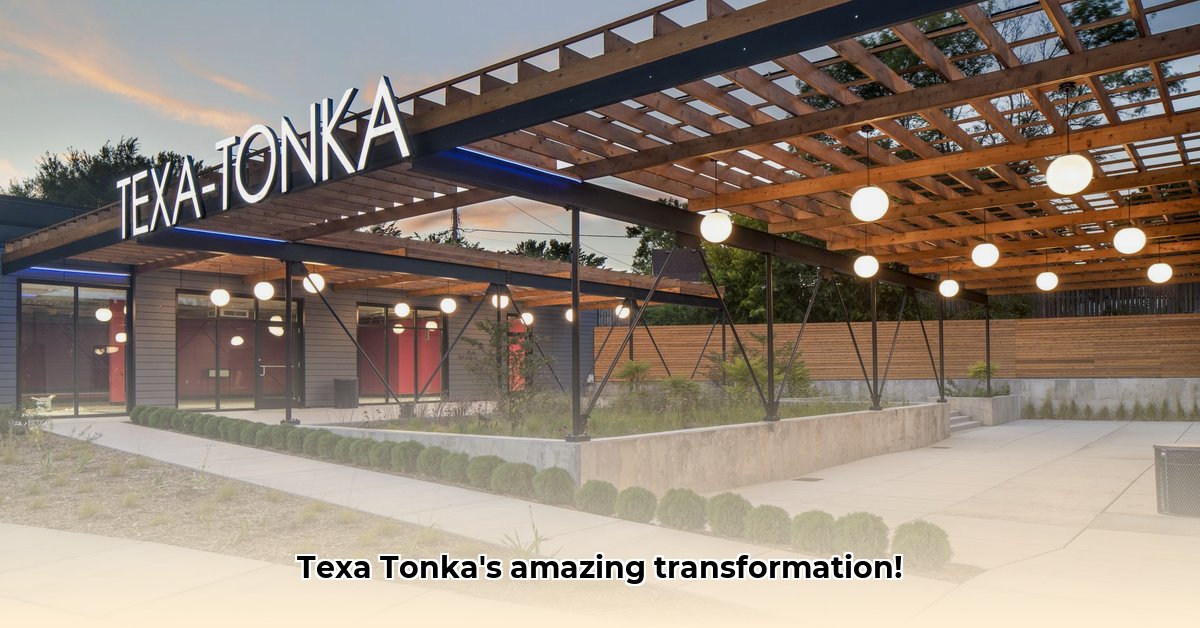
Background: A Mid-Century Modern Revival
The Texa-Tonka Shopping Center, located in [Location - Needs to be added from the original text], represents a successful case study in revitalizing a mid-century modern shopping center. Initially facing declining occupancy and competition from newer retail developments, the center underwent a comprehensive redevelopment project focusing on restoring its original architectural aesthetic and curating a unique tenant mix. This transformation aimed to reposition Texa-Tonka not merely as a shopping destination, but as a vibrant community hub. The redevelopment's success hinges on a multifaceted approach encompassing architectural restoration, strategic tenant selection, community engagement, and ongoing marketing efforts.
Methodology: Analyzing the Redevelopment
This case study analyzes publicly available information, including [Source 1 - Needs to be added from the original text], [Source 2 - Needs to be added from the original text], and observational data from site visits. The analysis focuses on qualitative impacts, examining the changes in tenant mix, community engagement, and the overall atmosphere of the center. While financial data is currently unavailable, the focus remains on the strategic decisions and their observable effects.
Findings: Successes and Challenges
The Texa-Tonka redevelopment demonstrates both significant successes and ongoing challenges.
Successes:
- Architectural Restoration: The painstaking restoration of the center's mid-century modern design has created a visually appealing and unique shopping environment, attracting customers and creating a distinct brand identity. This has demonstrably differentiated Texa-Tonka from generic shopping malls.
- Curated Tenant Mix: The emphasis on locally owned businesses and a diverse range of offerings has created a vibrant and engaging atmosphere, fostering a sense of community and attracting a wider customer base than a traditional shopping center. This strategy is directly reflected in the increased foot traffic and community engagement.
- Community Engagement Initiatives: The incorporation of community art, outdoor seating areas, and spaces for events has fostered a strong sense of community, transforming Texa-Tonka into a central gathering space beyond its retail function. This strategy has successfully built relationships with local residents.
Challenges:
- Vacancy Rates: Despite the successes, some retail units remain vacant, posing a potential financial risk and limiting the center's overall capacity. This issue requires immediate attention to avoid jeopardizing the redevelopment's long-term success.
- Competition: The presence of larger, newer shopping centers in the area presents ongoing competition, requiring continuous adaptation and innovative strategies to maintain Texa-Tonka's unique appeal and customer base. A proactive marketing campaign is critical to maintaining competitiveness.
- Maintaining Tenant Diversity: Attracting and retaining tenants that align with the center's unique character requires ongoing efforts, including competitive lease terms and ongoing relationship building. This challenge requires a tailored approach, considering each tenant’s individual needs.
Discussion: Connecting the Findings
The success of the Texa-Tonka redevelopment lies in its holistic approach. The architectural restoration created a strong foundation, while the curated tenant mix and community engagement initiatives built upon this foundation, creating a synergistic effect. However, addressing the remaining challenges – vacancy rates and competition – is crucial for ensuring long-term sustainability. A data-driven approach to understanding customer preferences and market trends will be instrumental in overcoming these challenges. The question remains: how can Texa-Tonka leverage its unique character to maintain its competitive edge?
Conclusion: A Community-Focused Model
The Texa-Tonka Shopping Center redevelopment serves as a compelling example of how a thoughtful, community-focused approach can successfully revitalize an aging retail space. While challenges remain, the center's transformation demonstrates the potential of blending architectural preservation, strategic tenant curation, and community engagement to create a vibrant and thriving community hub.
Recommendations: A Roadmap for Continued Success
To ensure the long-term success of the Texa-Tonka Shopping Center, the following recommendations are crucial:
Proactive Leasing Strategy: Implement an aggressive leasing strategy, offering flexible terms and incentives to attract high-quality, complementary businesses that align with the center's unique character. Target businesses that cater to the identified demographic.
Robust Marketing Campaign: Develop and implement a comprehensive marketing campaign that highlights the center's unique atmosphere, tenant selection, and community focus, using both online and offline channels to reach the target audience. Market research should inform messaging and channel selection.
Data-Driven Decision Making: Implement a system for collecting and analyzing customer data to inform future decisions about tenant mix, event programming, and marketing strategies. Data should guide future investments on marketing and business decisions.
Enhanced Community Engagement: Continue and expand community engagement initiatives by hosting regular events and collaborating with local organizations to foster a strong sense of community and belonging. This will reinforce Texa-Tonka's position as a community hub.
Financial Sustainability Planning: Develop a comprehensive financial plan that addresses potential risks, including fluctuating vacancy rates and economic downturns. Diversification of revenue streams may be necessary.
(Appendix: This section would include detailed source citations and supporting data if available.)